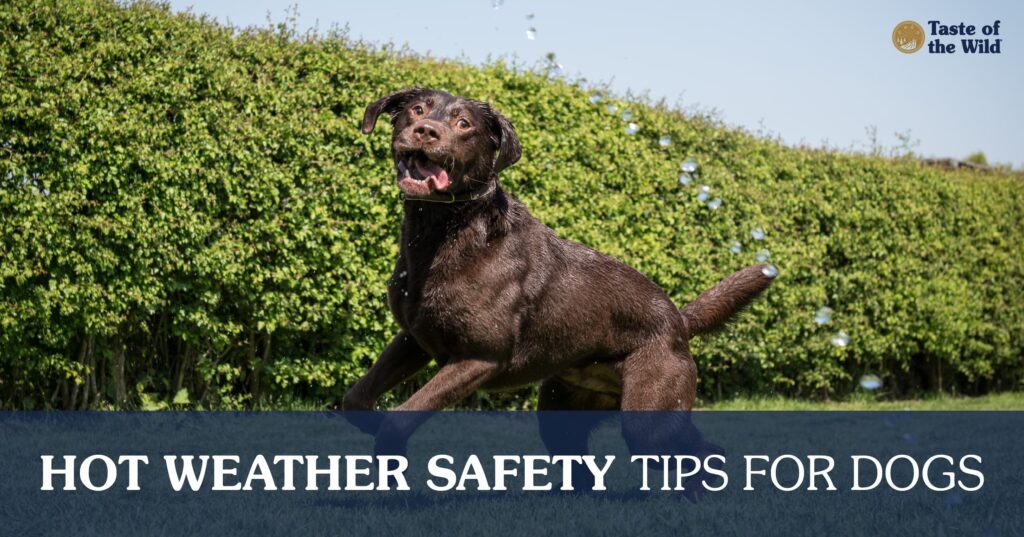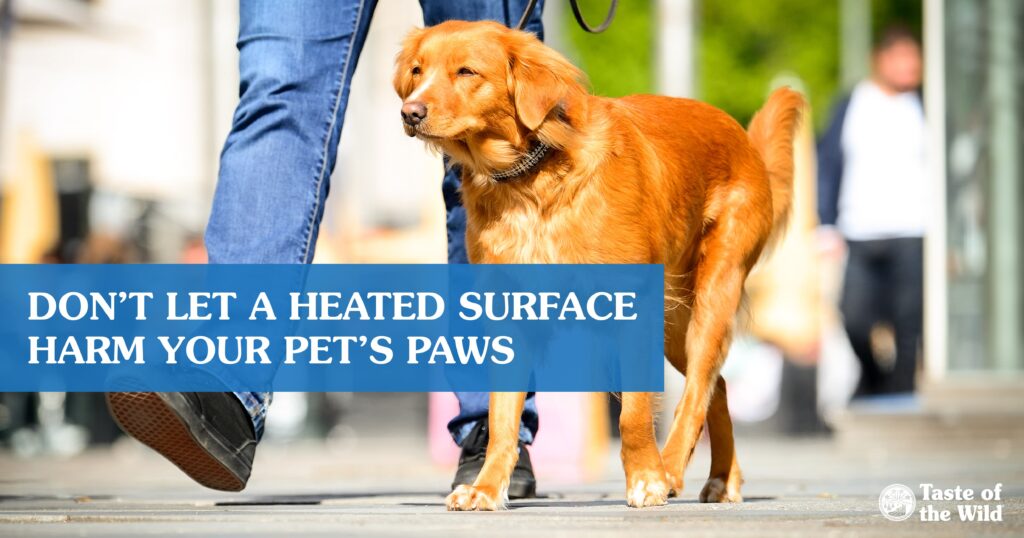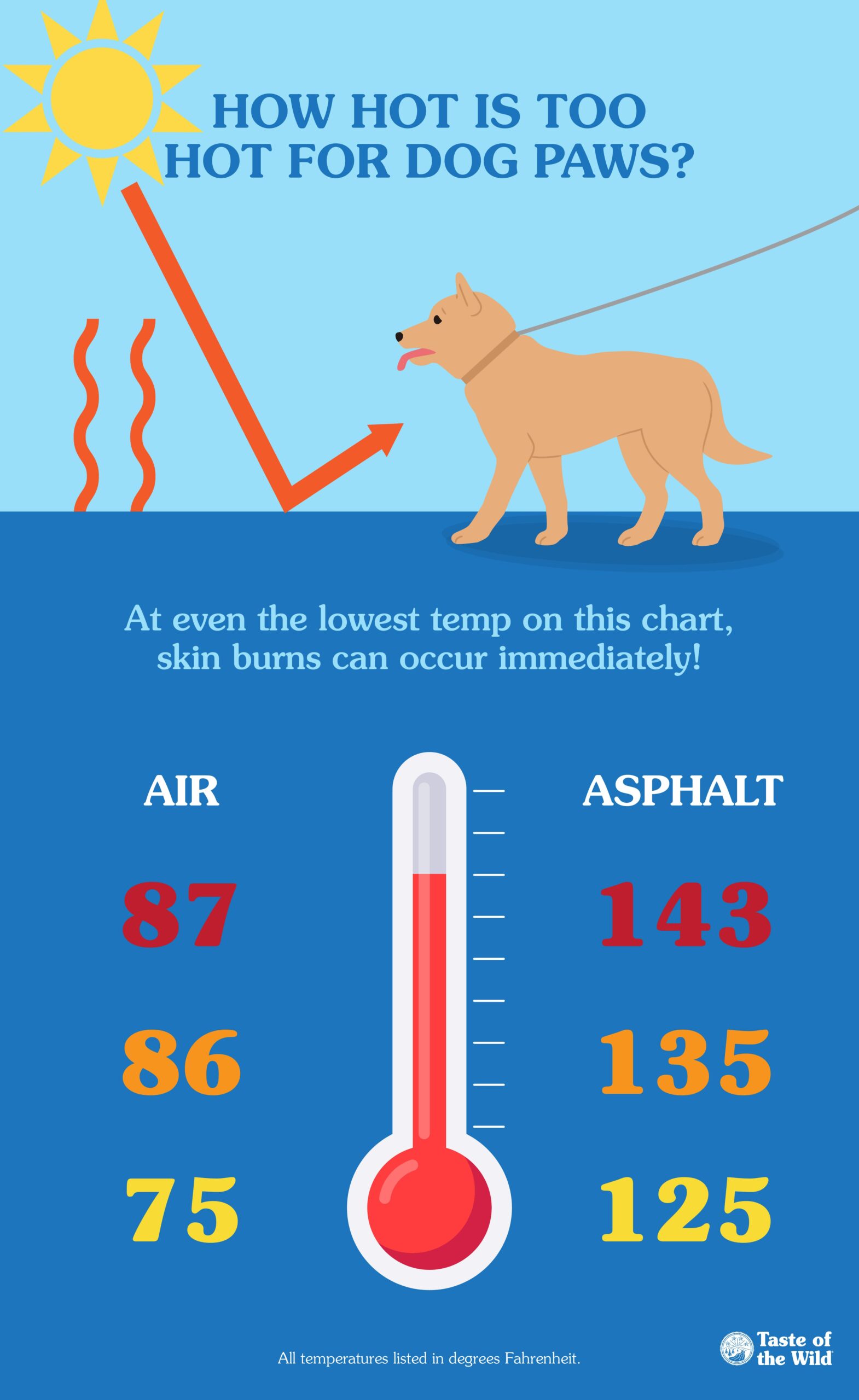
Summer is time for vacations and getting outside for all kinds of fun! Whether you’re taking your dog to the beach or just getting in your daily walks, how do you ensure your dog stays safe out in the summer heat? We’re here with a few cool ways you can keep your canine from overheating during the hotter months.
Avoid Hot Pavement
When temperatures rise to 75° Fahrenheit, be sure to keep a more watchful eye on how your dog is doing on walks. Pavement temperatures can become 40° to 60° hotter than the air temperature, leading to burns or blisters on your pet’s paws. On those warm, sunny days, we recommend walking your dog in the grass or considering dog booties when walking on the sidewalk, asphalt or other heat-reflected surfaces. A good way to tell if the surface is too hot for your dog’s paws is by placing your hand on the ground for at least 10 seconds. Was the surface temperature too hot for you to handle? That means it’s too hot for doggy paws, too.
Plenty of H2O is A-OK
Hydration is key to keeping your canine from overheating in hot weather. Cold water can immediately cool your dog down from the inside out.
When turning your doggo loose in an enclosed area, ensure their water bowl remains full of cold water. A freezable water bowl placed in the shade can help keep drinking water colder, longer.
On walks or outdoor adventures, always carry a collapsible bowl and cold water so your dog can stay hydrated. Freeze a couple of water bottles or icepacks to provide instant cooling relief. If your dog allows you, place the frozen bottles or packs on your pet’s neck, under their armpits or near their groin. Ice applied to these locations provides quicker cooling relief.
Lastly, some dogs like being sprayed down with a hose, running through a sprinkler or being spritzed by a spray bottle full of lukewarm water. Experts recommend spraying your doggo under the legs, on the belly and on the paws for instant relief from the heat — if your pet is comfortable with this measure. Some dogs may be frightened by this method so slowly test this out on your pet’s legs and evaluate how they react.
Steer Clear of a Toasty Car
Never, EVER leave your dog in a hot car for more than a few minutes. The outside temperature might read 80° Fahrenheit, but the inside of your car can quickly reach a deadly 120°. Cracking the windows doesn’t keep the car cool enough.
In the event that you need to leave your doggo in a car unattended for a few moments, make sure the air conditioning is running at full blast and provide them with a water bowl where they can access it. Veterinarians recommend only doing this for five minutes or less, and only resorting to this option if you have no other alternatives. Why? You never know when a car could malfunction or if Fido will accidentally bump the gear shifter.
Signs a Doggo Is Getting Too Hot
Experts recommend limiting exercise and outdoor time on hotter days — the amount of time varies based on age, breed, health complications and amount of fur. Your pet will let you know when it’s time to go in with their panting and breathing patterns. Increased panting and rapid breathing is an indication it’s time to get out of the heat.
While all dogs are prone to heat stroke under scorching conditions, pets who are obese, have extremely thick fur, respiratory issues or flat faces (short noses) are prone to overheating more quickly. If your canine exhibits any of the following symptoms while out in the heat, be sure to immediately move them to a cooler location with plenty of cold water:
- Increased panting or rapid breathing
- Stumbling or bumping into nearby objects
- Excessive drooling
- Increased thirst
- Lethargic
- Bright red gums and tongue
- Vomiting or diarrhea
For strolls lasting more than 10 minutes, we recommend adjusting your daily walk schedule. The coolest daylight hours will be around sunrise and sunset. In addition to having a cool, safe and healthy doggo, you can take advantage of the golden hour for stunning photos of your dog on those early morning or evening walks.



